How Long Does It Take For Hair To Grow?
The Hair Cycle: Phases and Factors Influencing the Hair Growth
An adult human has nearly 100,000 follicles in their lifetime. They follow a definitive hair cycle but mature at a different rate of time. Hair growth (2) is a natural cycle. It begins with the development of hair follicles, their growth and proliferation, and ceases with the shedding of hair strands.
Responsible for hair growth, maturation, and replacement, all hair follicles do not mature at once and get influenced by factors (genetics, scalp conditions, hair health, age, gender). Learn more about the annual growth rate of a hair strand and how to boost its growth and development.
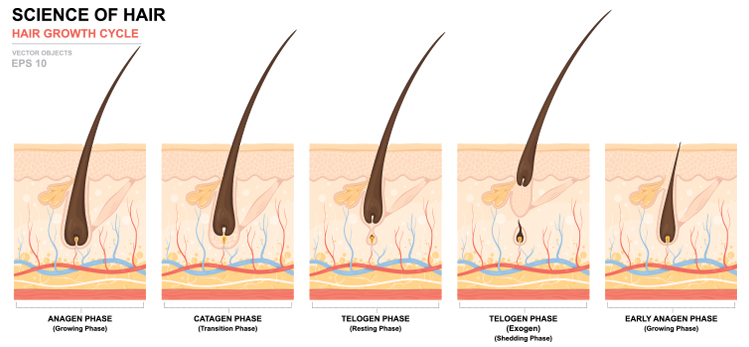
Different Stages of Hair Growth
Natural hair growth happens around 1/2 inch/month. The hair cycle (4) defines the different phases in the lifecycle of a hair follicle. Classified into 4-distinct phase, here's how long does it take for hair to grow;
Anagen - The Growing Period
The primary phase of the hair cycle anagen has a timeline between 3-5 years. Longest to the rest of the hair cycle, your hair follicles drive the hair strands to grow until maturity. If not trimmed, a hair strand can grow up to 5 metres until it reaches the shedding phase. Most hair follicles (over 90%) lie in the anagen phase.
Catagen - The Phase of Transition
The secondary phase of the hair cycle shows arrested growth and gradual ceasing of further hair development. With a brief timeline of nearly 10-days, the hair follicles gradually shrink while hair strands experience separation from their root.
No hair fall happens at this stage. Catagen is a transcending phase between hair growth and hair shedding. 5 out of 100 hair follicles reach the catagen phase at a time. Next follows separation from their root and gradual shedding during the telogen and exogen phases.
Telogen - The Resting Phase
The tertiary phase of the hair cycle is where the hair follicles experience a temporarily suspended state. In any hair cycle, the telogen phase appears twice.
The percentage of hair experiencing the telogen phase lies between 10-15 in every 100 hair follicles. Hair follicles undergo no growth or development in this phase. Also, hair shedding doesn't happen during the telogen phase
After exogen (hair shedding) and before anagen (hair growth) begins, the germinating hair follicles experience telogen.
Between catagen and exogen, the developed hair follicles awaiting to shed.
Exogen - The Shedding Phase
The concluding phase of the hair cycle serves as the shedding phase of the telogen phase. Many dermatologists don't treat this as an independent phase where a person can experience shedding 50-100 hair strands daily.
This phase is vital because it replaces the old, broken, and damaged hair follicles. A hair follicle stays in the exogen phase for 2-5 months before shedding.
Summary of the Hair Cycle
We experience around 25 hair cycles in our lifetime. Each hair cycle lasts for about 4-7 years. Also, out of every 5-hair strand, 4-hair follicles experience anagen while 1-hair follicle lies in the telogen phase.
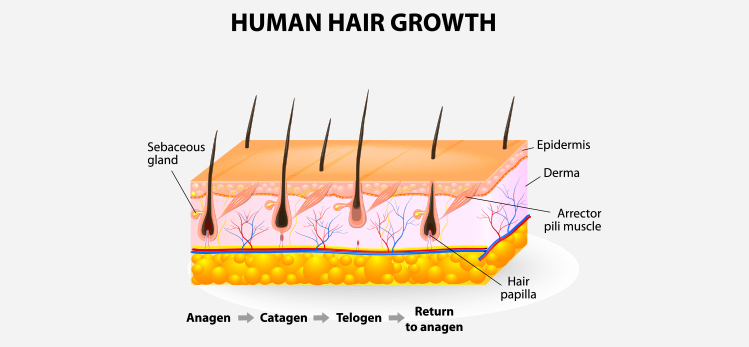
Potential Factors Influencing Hair Growth
Most hair strands don't get to grow as Rapunzel had! For healthy and long-lasting hair, here's what you need to know;
Hair Management
Combing helps spread the vital scalp oil from the root to the tip. Occasional oiling, shampoo and conditioner, and hair massage is a well-known secret to good hair. It reduces hair entanglement, maintains smooth strands, and keeps your scalp happy.

Food and Sleep
Consuming food rich in essential nutrients (Vitamin B12, C, D, Iron, and Zinc) is a hair-friendly diet. Sleeping around 7-8 hours/daily eliminates all the stress prevents premature greying or sudden hair fall.
Health and Lifestyle
Be prepared to experience a loss of hair if you lead a burned-out lifestyle. Excessive work-lifestyle stress, little rest or lack of mindfulness leads to poor scalp circulation, triggering hair shedding. Patients undergoing treatment for critical disorders experience hair thinning and sudden shedding.
Hair Problems
Those with hostile hair genes are prone to premature baldness. Dirty scalp from work-related conditions helps proliferate Malasezzia like organisms, causing excessive loss of hair. Clinical cases like telogen effluvium (6), trichotillomania, and alopecia areata also count for significant hair fall.
Conclusion
Ever wondered why our head doesn't turn bald overnight? Most of the hair follicles (at least 90% and more) stay in the anagen phase. Once all the hair follicles have crossed their anagen phase, gradual shedding happens over the years. We keep on losing patches of hair over decades. Finally, when all the hair follicles have passed their exogen phase, it's a bald head.
Visit a dermatologist to treat any underlying problems that trigger abrupt hair shedding. The hair cycle of the scalp differs from that of body hair in other parts. Good hair management, a healthy lifestyle, and good genetic prowess can aid you to sport a hairstyle until the last of your days.
Myth Busters HairFall
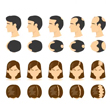
Androgenetic Alopecia - Everything You Need To Know
Have you been experiencing excessive hair fall over a prolonged period of time? It could be an early sign of androgenetic alopecia. It is a hair loss disorder common in both genders and can lead to progressive thinning and even baldness in some patients if not caught and treated early.

How To Make Hair Grow Faster For Men
A head full of healthy hair is a matter of confidence. Hair has its own mechanism of growing and shedding, and it is when this mechanism is thrown off that growth is hindered. Especially in the case of males, hair growth faces a lot of hiccups that can easily be managed.
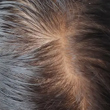
Female Pattern Baldness - Causes & Treatments
Have you suddenly noticed an increase in the number of hair strands on your pillow in the morning? Or is your ponytail getting thinner by day? Well, you might be suffering from female pattern baldness. While that does sound scary, identifying it early on is key to treating this condition effectively. So keep reading to know what this is, how you can identify it, and most importantly, what treatments you can avail of to get your beautiful lustrous hair back.
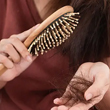
What Are The Reasons For Hairfall?
Almost everyone experiences some amount of hair thinning over the years. Shedding around 50 to 100 single strands of hair per day is considered normal. However, losing more than 150 strands a day, experiencing sudden thinning, or developing circular bald patches on your scalp are reasons for concern. Hair loss occurs when new hair doesn’t grow fast enough to replace the amount of hair you lose daily. Hair can fall due to various reasons, with hereditary hair loss and poor nutrition being the most common hair fall reasons.

Expert Approved Tips For Hair Growth
What can be more debilitating than seeing hundreds of hair strands shedding from your scalp every time you brush your hair? Also, excessive molting occurs during seasonal changes that can be very stressful for you. Although it’s okay to lose between 50-100 strands every day, according to the American Academy of Dermatology, the problem occurs when you start shedding more than normal. But that doesn’t mean you have to feel helpless as there are ways to grow your hair back. Even if you are coping with baldness or alopecia, certain hair growth tips from dermatologists can come to your rescue. Read on to discover how these tips can be your savior when abnormal hair fall problems are in sight.
Trending Videos
+ 6 Sources
LMRC - GGI-CO-A2-DMA-300026127-300026127-WM-J21-282
© 2021 Dr. Reddy’s Laboratories Ltd. All rights reserved.